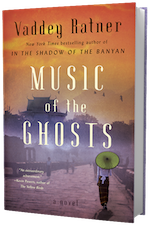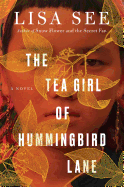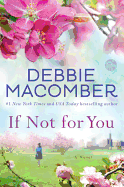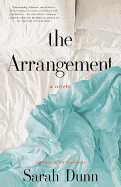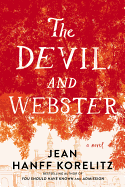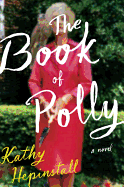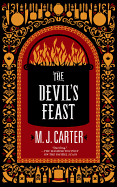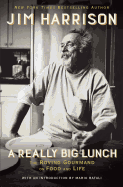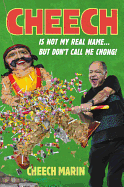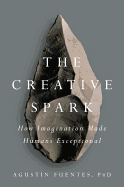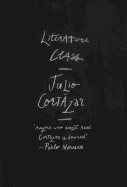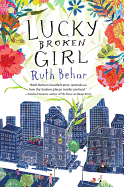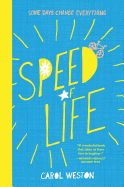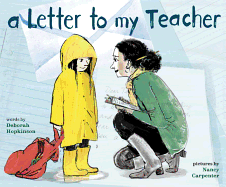 |
| photo: Kristina Sherk |
Vaddey Ratner is a survivor of the Khmer Rouge regime in Cambodia. Her critically acclaimed bestselling debut novel, In the Shadow of the Banyan, has been translated into 17 languages. She is a summa cum laude graduate of Cornell University, where she specialized in Southeast Asian history and literature. Her new novel, Music of the Ghosts, returns to Cambodia, and will be published by Touchstone on April 11, 2017.
In the Shadow of the Banyan was largely autobiographical. How was the writing process different for Music of the Ghosts?
With Banyan, the fear was delving into something so deeply personal, so traumatic. I didn't know whether I could stop the process, once I dove in. I didn't know what else I would find.
With Music of the Ghosts, I knew I wanted to write about forgiveness and atonement, but I didn't know whether the characters I'd brought forth were capable of this. I felt more at the mercy of the characters. I had to access them on all levels--emotional and psychological, political and intellectual--and within these pages, I had to make their journey complete, without the chronology of real-life histories to rely on.
Banyan was scary because it was autobiographical; Music was scary because it wasn't.
The horror of the Khmer Rouge is hard to comprehend. How do people in such dire situations hold onto their humanity?
If, in your deepest, darkest hour, you can for one moment imagine the humanity of the enemy, if you can open your soul to see that the person who inflicts suffering on you has possibly himself suffered greatly so that he's driven by his own pain to hurt and harm, if you can see in him a human being like yourself, then you can imagine something larger than that moment's cruelty. This, I think, opens up the possibility for transformation, in yourself as well as in your enemy.
Teera's return to Cambodia throws her emotions into turmoil. Was it the same for you when you returned to Cambodia?
The emotional turmoil that Teera experiences on returning to Cambodia certainly echoes my own. Like Teera, when I fled as a child I had the sense that the most essential part of me was buried with the dead--that I had died with my family. When I returned as an adult, it was a kind of rebirth. I was able to find some relatives, and because so many had been lost, the ties we were able to rebuild were that much stronger.
Teera's profound love for what she calls home resonates with my own. When you flee as a refugee, you're essentially seeking the refuge of humanity, which has been attacked and diminished in the home you've left behind. You're seeking not just any place, but a place that upholds a sense of home and community, even if different from your own. Once you've known the meaning of home--the sanctuary and protection it provides--you have the urge to create a home wherever you end up. Teera's enduring love for Cambodia gives birth to the love she feels for America.
Music plays an important role in this story. What does music mean to you?
In Cambodian culture, music plays a role in every aspect of daily life--births and deaths, unions and separations, illness and healing. There is music offered to the gods, to spirits of the forests, to ancestors, to guests. When one sets off for a journey, there is music to send the traveler on the way. Music is blessing, music is nutrient, music is medicine. When words fail, music is our other voice.
How did you research the parts of the story that did not come from your first-hand experience?
I had examined the historical context as a student at Cornell University, where I was trained to take a very probing gaze, even when looking at something so personal. Few readers are familiar with the history and politics of the Khmer Rouge, including the connections to America's own exercise of power. So much I'd wanted to say about that history I couldn't say in Banyan, because the story was told from a child's point of view. The challenge in Music was to tie the intimate, personal trauma with the historical tragedy--to make both equally powerful.
In what ways do you honor the "ghosts" in your life?
I honor the ghosts by giving credence to the living. As a writer, I try to tell stories that emphasize how precious life is, how unjust and untimely death can be, how unnecessary and wrong war is. There is enough suffering already without the expedient of weapons. Often the destruction brought on by violent conflicts is so thorough that you're left with only the memories of your loved ones. So as a survivor, you try to keep alive the hopes and dreams of those who died. You live as if also for them.
Personally, honoring the sacrifices of those who enabled me to survive requires me to imagine suffering much deeper than my own. Every time I return to Cambodia, I'm confronted with that suffering directly. I meet musicians, many of them maimed or blind, who have the energy to smile or to greet me, to offer music to a world that has trained itself to turn its gaze away. To live each day of my life aware not only of the suffering but the hope tied to it, I feel, is the only way to earn my right to share this world.
In your author's note, you mention one of the book's central concepts, that perpetrators and victims live side-by-side in today's Cambodia. Do you think the divide between them can ever truly be healed?
For me, healing doesn't mean taking something broken and making it whole again, which is not possible. Nor is it the same as forgetting. If anything, healing requires an active process of remembering, examining the wounds. I believe the divides can be healed, but as with any wound, there remains a scar, and I hope that scar serves as a reminder not to inflict further suffering.
Was it difficult to pace the novel since you were juggling different points in time? How did you decide where to reveal secrets and when to keep them waiting?
Yes, every time I thought about the trajectory of the novel, and how my characters would develop, my heart fluttered. I would ask myself again and again how was I going to carry it off? Astonishment, anger and despair, sympathy, acceptance, forgiveness. How would I convey all this? How was I going to achieve all of it at once?
I remember the whole time I was writing, I kept missing the mark in predicting when each layer of secrets would come. Both the Old Musician and Teera became so real that each would direct me, "No, not yet, this is not the right time." So the moment, the crucial revelation, came when both characters were ready. It wasn't something I could have plotted out far in advance. When it happened, I felt privileged to have been allowed to witness it, to have been included in the intimacy of their sharing.
I came to realize that I didn't need to know everything. Yielding to my characters actually makes for better plot development. There are elements of the past that become necessary because of where the characters are at in the present, the questions they're asking, the journey they want to take. You don't want to constantly prepare your reader for the drama you envision. You want only to propel the story forward. The material you impart has to be the thing that is most important in that moment.
You are two beautiful books into your career as a novelist. Can we expect a third?
Novel writing for me is a reflection of my own growth. I'm grappling with questions that take a long time for me to come to grips with, so I can't predict how the ideas will mature, much less when. I certainly hope there's a third, and more after!
The questions I'm confronting now circle around the theme of freedom. Empires rise and fall. Along with them, borders and boundaries and walls. These are not natural phenomena--they're things that people create, and that people undo. In a world of such shifting boundaries, what binds us, what confines us, and what makes us free? --Jaclyn Fulwood
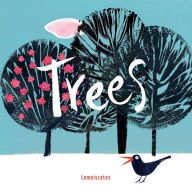 Trees (Candlewick, $14.99, ages 2-5) comes from Lemniscates, a Barcelona author/ illustrator/designer collective. Mixed-media illustrations and a few words on each beautiful two-page spread capture the "marvelous beings" that are trees. Trees is more than a pretty book, though--in simple language, it provides real, if poetically minimal, information: "Trees clean the air we breathe... and give us their seeds with every piece of fruit." Simply lovely.
Trees (Candlewick, $14.99, ages 2-5) comes from Lemniscates, a Barcelona author/ illustrator/designer collective. Mixed-media illustrations and a few words on each beautiful two-page spread capture the "marvelous beings" that are trees. Trees is more than a pretty book, though--in simple language, it provides real, if poetically minimal, information: "Trees clean the air we breathe... and give us their seeds with every piece of fruit." Simply lovely.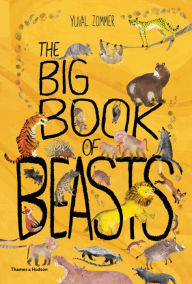 Whimsical and quirkily informative, The Big Book of Beasts (Thames & Hudson, $19.95, ages 4-up) by Yuval Zommer (The Big Book of Bugs) introduces readers to baboons, binturongs, honey badgers and more than a dozen other mammals that qualify as beasts: "deadly, cunning and most importantly, wild!" Charming illustrations of each beast in various poses and habitats, questions and answers ("Just how lazy is a sloth?"), search-and-find challenges and special sections on Ice Age beasts and saving endangered species make this "Big Book" a big winner.
Whimsical and quirkily informative, The Big Book of Beasts (Thames & Hudson, $19.95, ages 4-up) by Yuval Zommer (The Big Book of Bugs) introduces readers to baboons, binturongs, honey badgers and more than a dozen other mammals that qualify as beasts: "deadly, cunning and most importantly, wild!" Charming illustrations of each beast in various poses and habitats, questions and answers ("Just how lazy is a sloth?"), search-and-find challenges and special sections on Ice Age beasts and saving endangered species make this "Big Book" a big winner.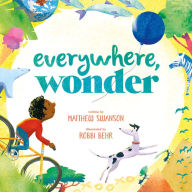 Everywhere, Wonder (Imprint/ Macmillan, $17.99, ages 3-6) takes readers on a wild adventure from a little boy's bookshelf into the wide world. Dreamy pictures show the boy drifting right through the panes of his bedroom window--as if it were water--into wondrous settings: rocketing toward Earth from the moon, gazing into the tree canopy in the jungles of Brazil and, in Sheboygan, enjoying an ice cream cone with "a tractor mechanic named Shirley." Author Matthew Swanson and illustrator Robbi Behr (Babies Ruin Everything) show readers how a lively imagination and a good book can carry you anywhere in this world--and beyond. --Emilie Coulter, freelance writer and editor
Everywhere, Wonder (Imprint/ Macmillan, $17.99, ages 3-6) takes readers on a wild adventure from a little boy's bookshelf into the wide world. Dreamy pictures show the boy drifting right through the panes of his bedroom window--as if it were water--into wondrous settings: rocketing toward Earth from the moon, gazing into the tree canopy in the jungles of Brazil and, in Sheboygan, enjoying an ice cream cone with "a tractor mechanic named Shirley." Author Matthew Swanson and illustrator Robbi Behr (Babies Ruin Everything) show readers how a lively imagination and a good book can carry you anywhere in this world--and beyond. --Emilie Coulter, freelance writer and editor


